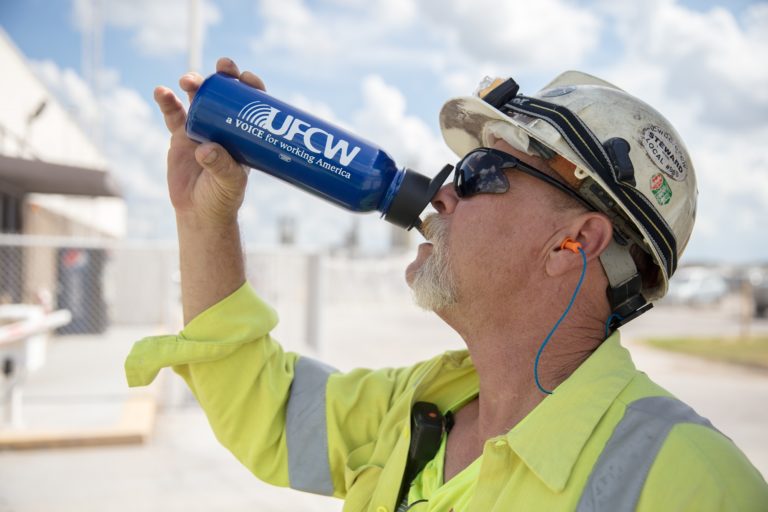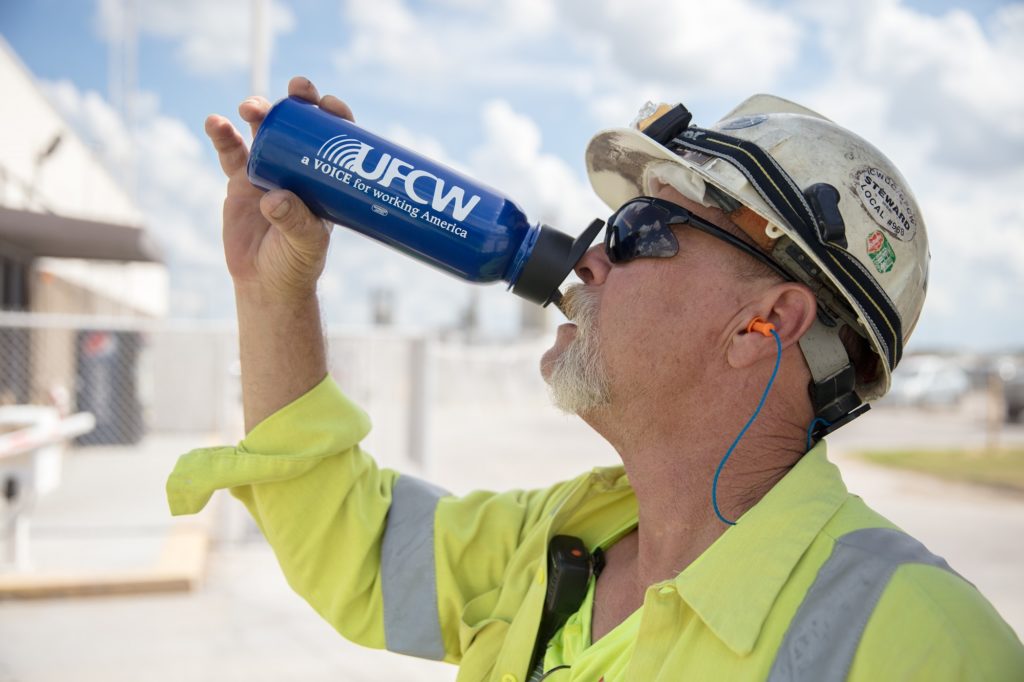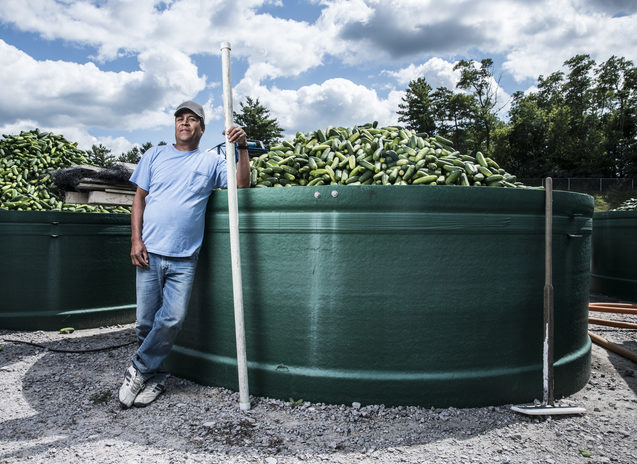
All workplaces should have a plan in place for how to safely respond to the risks associated with warmer temperatures. Don’t let summer catch you off guard- make sure your workplace has proper hot weather safety strategies in place. If you aren’t sure if your workplace is prepared for warmer weather, talk to your union rep.
Heat can cause more than just discomfort. Exposure to high heat and high humidity can be life threatening. Employers should make sure workers know the signs, symptoms and appropriate first-aid procedures for serious heat illnesses.
1.) All management and hourly employees should be trained with an emphasis on how to recognize a medical emergency (heat stroke).
2.) Have clearly written protocol on how to respond to a medical emergency.
This should include information for all shifts about who is authorized to call an ambulance, how to call for an ambulance, and what to do while waiting for emergency medical care. This protocol should be translated into the commonly spoken languages in the facility and posted throughout the workplace.
3.) Train all management and hourly employees on workers’ right to access drinking water as needed and the right to access to bathrooms as needed.
This is important because some workers hold back on drinking water so that they can put off using the restroom. This is never a good idea and can have serious consequences during hot weather.
 4.) Monitor particularly hot and humid work areas.
4.) Monitor particularly hot and humid work areas.
This should be done with a device that measures both heat and humidity and combines these measurements to provide the Heat Index. The company should have a plan for additional rest breaks or means of cooling the work area whenever the heat index approaches the Extreme Caution zone.
| Heat Index | Risk Level | Protective Measures |
|---|---|---|
| Less than 91°F | Lower (Caution) | Basic heat safety and planning |
| 91°F to 103°F | Moderate | Implement precautions and heighten awareness |
| 103°F to 115°F | High | Additional precautions to protect workers |
| Greater than 115°F | Very High to Extreme | Triggers even more aggressive protective measures |
5.) Give workers time to acclimatize.
New workers should be given time to get used to working in high heat areas. During their first two weeks they should be monitored for signs of heat illness and provided extra breaks until they have adjusted to the heat.

Work with your union rep and your local to make sure that you and your coworkers are protected in hot conditions. Meet with the company to ensure that all of the proper hot weather safety strategies are being used in your workplace.
For more information about heat and heat-related illness, you can contact the UFCW Occupational Safety and Health Office in Washington, D.C. at 202-223-3111.

